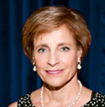Preying on the vulnerable – National Consumers League
 Earlier this November, NCL held a meeting with our Alliance Against Fraud coalition. We had presenters from the Federal Trade Commission (FCC) representing the government and AARP representing advocacy interests. If Frank Abagnale Jr. of Catch Me If You Can, and AARP’s newest spokesperson, taught us anything, it’s that scammers know their targets and their sights are almost always set on the most vulnerable consumers. Scammers also work together by distributing “sucker lists” amongst themselves that keep victims at the mercy of scammers.As AARP can attest, older Americans are frequent scam victims. Perhaps you’ve heard about the “grandparent scam.” In grandparent scam scenarios, fraudsters claim to be calling on behalf of a grandchild asking for funds to bail themselves or another loved one out of jail or out of some trouble. It was discussed that some scammers actually monitor obituaries of grandparents to find the information of a grandchild to use that name when making the call to the surviving grandparent.
Earlier this November, NCL held a meeting with our Alliance Against Fraud coalition. We had presenters from the Federal Trade Commission (FCC) representing the government and AARP representing advocacy interests. If Frank Abagnale Jr. of Catch Me If You Can, and AARP’s newest spokesperson, taught us anything, it’s that scammers know their targets and their sights are almost always set on the most vulnerable consumers. Scammers also work together by distributing “sucker lists” amongst themselves that keep victims at the mercy of scammers.As AARP can attest, older Americans are frequent scam victims. Perhaps you’ve heard about the “grandparent scam.” In grandparent scam scenarios, fraudsters claim to be calling on behalf of a grandchild asking for funds to bail themselves or another loved one out of jail or out of some trouble. It was discussed that some scammers actually monitor obituaries of grandparents to find the information of a grandchild to use that name when making the call to the surviving grandparent.
They convince the grandparent that their loved one needs their money and direct the victim to a store to load money onto a gift card. Once the codes on that card are sent to the scammer, there is no turning back, the money is gone.
A new trend revealed at the meeting was that scammers are increasingly turning to iTunes, Target, and Amazon gift cards as payment methods. These cards, unlike credit or debit cards, don’t offer robust anti-fraud protection. Even wire transfer services like Western Union and MoneyGram–which have historically been a favored payment method amongst fraudsters–now have more protective anti-fraud protection protocols. But, as we’ve seen, as soon as one tactic starts to fail, scammers will undoubtedly find a new way to take advantage of victims.
In an interview with CBS News’ Carter Evans, a former scammer noted that elderly people are more “gullible, accessible, more likely to get emotionally invested and likely to do anything for their grandchildren.” It should also be noted that the strength of the bond between grandchild and grandparent will sometimes facilitate the willingness of the grandparent to not involve the child’s parents. We can keep older Americans and immigrants safe from scams that exploit them. NCL’s Fraud.org website and AARP’s Fraud Watch Network offer tips and resources for detecting and avoiding scams. For victims or family members of fraud victims, we suggest filing a complaint at Fraud.org or with the Federal Trade Commission at www.ftc.gov or by phone at 1-877-382-4357.


 I made the trip to Detroit yesterday on behalf of NCL to attend the memorial service for long-serving board member, Esther Shapiro. In Detroit for just a few hours to pay homage to a woman I respected and held dear, I reflect on her legacy and what that means.
I made the trip to Detroit yesterday on behalf of NCL to attend the memorial service for long-serving board member, Esther Shapiro. In Detroit for just a few hours to pay homage to a woman I respected and held dear, I reflect on her legacy and what that means.















